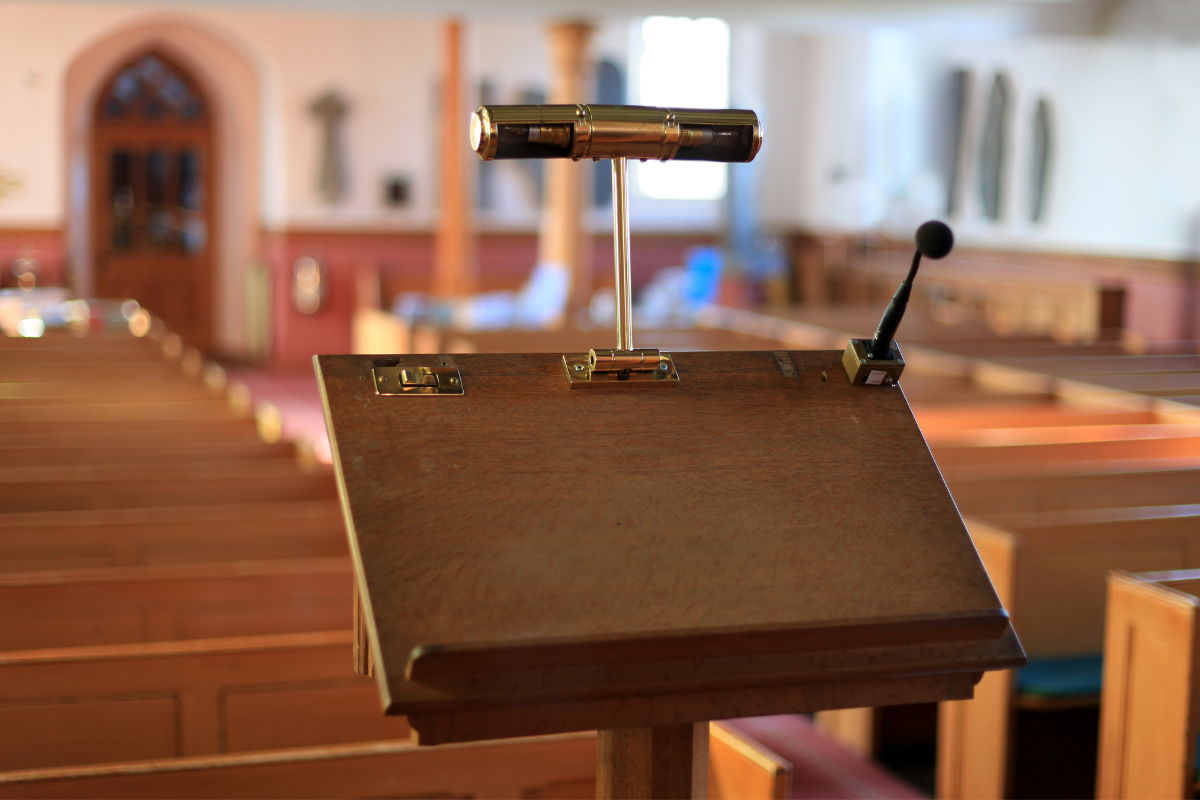Post Disclaimer: This blog reflects the author's personal experience with end-of-life matters and is provided in good faith for informational purposes only. While we aim to provide clear guidance on hard-to-find topics, this content is not legal advice and your use is at your own risk. Estate planning and end-of-life laws vary by location, so please consult your state's laws and seek guidance from a licensed attorney for your specific situation. We make no warranty about the accuracy or completeness of this information, which does not replace professional legal counsel. For more information, please see our full disclaimer.
Writing a eulogy is an undertaking that carries deep emotional weight and significance.
It’s more than just words; it's a heartfelt tribute to someone who has left a lasting impact.
For many, knowing how to write a eulogy during such a difficult time can be daunting.
It's a chance to honor a loved one, capturing their essence for others to remember.
This task can seem overwhelming, but it’s also a profoundly personal way to say goodbye.
Through the right words, you can convey a legacy of love, humor, or wisdom.
It’s an opportunity to reflect on cherished memories and meaningful experiences, providing comfort to those who mourn and celebrate the life lived.

Understanding the Purpose of a Eulogy
When tasked with writing a eulogy, it's crucial to understand its true purpose.
Beyond simply recounting biographical details or achievements, a eulogy captures the essence of a person's life.
It's a deeply personal narrative that pays homage to the deceased, offering comfort and closure to those gathered in mourning.
Defining a Eulogy
A eulogy is more than just words spoken at a memorial service; it's a heartfelt tribute designed to honor and celebrate the life of someone who has passed away.
While its primary function is to remember and cherish, it also serves as a communal moment of reflection and unity.
During a time of grief, it stands as a beacon of empathy and shared loss, helping to bind mourners together in remembrance.
Typically delivered by someone close to the deceased, a eulogy should encapsulate the individual's character, virtues, and the impact they had on others.
It might include anecdotes, cherished memories, or personal reflections, all aiming to paint a vivid picture of the person being honored.
The Emotional Impact of a Eulogy
Delivering a eulogy isn't just about speaking on behalf of the departed; it's also about facilitating healing for both the speaker and the audience.
It's a chance to articulate what made the deceased special, offering a collective moment for healing through shared memories and emotions.
Furthermore, crafting and delivering a eulogy can be cathartic for the speaker, allowing them the space to express their grief and appreciation.
A well-considered eulogy also provides a touchstone for the audience, helping them connect their feelings of loss with fond memories of the person they are mourning.
The act of verbalizing these thoughts and feelings can transform grief into a celebration of life, creating a healing path forward.
By understanding the true purpose of a eulogy, you not only honor the deceased but also support the emotional well-being of everyone gathered to remember them.

Steps to Writing a Meaningful Eulogy
Writing a eulogy is a heartfelt journey of capturing the essence of a loved one’s life.
It's a way to share memories and celebrate their impact.
Below, we'll break down the steps to craft a meaningful eulogy, one that resonates deeply with those gathered to honor the deceased.
Gathering Information and Memories
When beginning a eulogy, it’s important to gather information and reflect on memories that best highlight the deceased.
Start by sitting with family and friends to share stories and anecdotes.
This moment of reflection not only helps build the eulogy but also aids in the grieving process.
Consider posing reflective questions like, "What was their most cherished habit?" or "What legacy do you think they’ve left behind?"
These moments of sharing can offer rich content for the eulogy.
For additional ideas on collecting personal stories, you can refer to this helpful guide.
Creating an Outline for the Eulogy
A strong eulogy benefits from structure and clarity. Begin with an introduction to set the tone and express condolences.
Follow with a body that includes key experiences, traits, and stories that depict the deceased’s life and character.
Close with a final section of reflection and gratitude. Writing an outline keeps the narrative organized, ensuring your tribute flows smoothly.
Websites like Grammarly offer useful insights on structuring a thoughtful eulogy.
Writing with Empathy and Authenticity
Writing from the heart is crucial. Speak with empathy and authenticity, allowing your genuine voice to honor the deceased.
It's okay to express vulnerability and emotion; these elements bring sincerity to your words.
Imagine you are directly speaking to your loved one and let that guide your language and tone.
The process isn't about achieving perfection; it’s about speaking your truth in a way that honors the departed meaningfully.
Including Personal Touches
Incorporating personal touches elevates a eulogy significantly.
Consider integrating beloved quotes, poems, or songs that held importance to the deceased.
These elements provide comfort and a sense of connection for those attending the service.
Just as you would add soul to a melody, these personal touches add depth to your tribute.
For more strategies on personalizing your eulogy, explore this in-depth resource.

Delivering the Eulogy with Poise
Delivering a eulogy is more than just reading words off a paper.
It is an emotional tribute that connects the living with memories of the departed.
Standing before friends and family, your heart might feel heavy with grief, yet it is your voice that needs to convey calm and strength.
With some preparation and an understanding of your emotions, you can deliver the eulogy with poise, making it a memorable homage to your beloved.
Practicing Your Delivery
Practice makes presence. The way you deliver the eulogy can make a lasting impression, both in honoring your loved one and soothing those who mourn.
Practicing your delivery isn't just about getting the words right.
It's about familiarizing yourself with them, helping you manage emotions that may rise during the speech.
- Rehearse Aloud: Find a quiet space to read the eulogy out loud. Hearing your own voice can help you gauge pacing and emphasis, ensuring that your delivery feels natural and heartfelt.
- Seek Feedback: Consider practicing in front of a trusted friend or family member. Not only can this person provide constructive feedback, but their presence can also simulate the feeling of speaking to an audience.
- Visualize the Moment: Imagine yourself standing at the podium, speaking with clarity and confidence. Visualization helps reduce anxiety by mentally preparing for the experience.
Remember, the essence of your words lies in how they are received.
Practice offers both comfort and confidence, reducing the possibility of getting overwhelmed during the actual delivery.
Handling Emotions During the Speech
Eulogies touch the deepest parts of our emotions.
It's natural to feel overwhelmed, but there are strategies you can employ to maintain composure while delivering your speech.
- Pause and Breathe: If you feel yourself getting emotional, don't hesitate to pause. Take a deep breath. This not only allows you to regather your thoughts but also gives your audience a moment to reflect.
- Keep Water Handy: A sip of water can be grounding, giving you a momentary respite to gather your emotions.
- Focus on the Positives: Guide your mind to the joyous memories and lessons shared by the deceased. This positive focus can provide strength and stability.
- Remind Yourself of Your Role: Remember, your words are a gift to everyone present. You’re helping them remember, cherish, and find solace. Your role is respected and appreciated, offering comfort through shared grief.
Equipping yourself with these strategies ensures that you can deliver a meaningful eulogy with grace, transforming emotional challenges into a genuine, heartfelt tribute.

Supporting Others During the Grieving Process
In the heavy moments following the loss of a loved one, supporting others can mean embracing shared memories and offering comforting resources.
Whether you're delivering a eulogy or simply attending a memorial, your support can create a ripple effect of love and healing.
Encouraging Shared Memories
Memories are like pieces of a beautiful mosaic, each one adding to the picture of a life well-lived.
Encourage those attending a memorial to share their own stories and recollections.
This shared storytelling can transform grief into connection and warmth.
Here are a few ways to foster this sharing:
- Memory Wall: Create a space where attendees can pin notes or photos, capturing meaningful moments with the deceased. This visual tribute serves as a collective memory book, preserving personal stories for all to see.
- Open Mic Time: Include a segment during the service where friends and family can share a favorite memory or story. This invitation to speak is a powerful testament to the impact your loved one had on those around them.
- Memory Cards: Provide attendees with small cards to write down their memories or well-wishes. These can be collected later and compiled into a keepsake book for the family.
By encouraging these practices, you’re not just keeping memories alive; you’re weaving a tapestry of shared experiences that comfort everyone present.
Offering Resources for Grief Support
Grief can feel like a solitary journey, but there are paths available that can lead to healing and support.
Reminding those grieving that help is available can make a world of difference.
For those navigating the early days of loss, resources such as the Death of a Family Member Checklist: First 24 Hours Guide can be invaluable.
This guide offers practical and compassionate advice for managing the initial whirlwind of tasks after a loss.
Additionally, exploring support groups like GriefShare or similar services can provide ongoing comfort and understanding.
These communities offer a space for sharing and healing with others who truly understand the weight of loss.
For more on how grief counseling and support groups can aid in recovery, you might find insights in Getting Started After Losing a Loved One - Up & Doing useful.
Offering these resources not only acknowledges the pain of those grieving but also emphasizes the importance of community and shared strength.

Wrap-up: How to Write a Eulogy
Creating a heartfelt eulogy is a vital step in honoring a life that touched the hearts of many.
Your words offer solace to those grieving and celebrate the significant life of your loved one.
Through careful reflection and sharing of personal stories, you weave a narrative that transcends the sadness of the moment, instead focusing on joy, love, and the indelible impact made.
If you're in need of resources or support during this time, exploring options for grief support can provide comfort.
Sharing this emotional journey with others who understand can make a significant difference.
Grieving is a shared experience, and finding community can be an invaluable part of healing.
Take the courage you've mustered here into future moments of remembrance.
Your tribute not only preserves the memory of your loved one but also strengthens communal bonds in the face of loss.
Get started with our free eulogy writing template, designed to guide you through this meaningful task step by step. Simply click the download button below to access your template and begin crafting a heartfelt tribute to your loved one.
Check out the Up & Doing glossary page for an alphabetical listing of key terms related to estate administration, funeral planning, and other end-of-life topics.




